Grgur Bučić: The Croatian Scientist Who Measured Hvar's Sunshine Hours
August 13, 2021 - You came to Hvar expecting sunny days and you weren't conned. Meet and thank Croatian scientist Grgur Bučić who started the weather station on Hvar, one of the first in Croatia, which measured how sunny Hvar really is.
There's nothing worse than when a traveller on a short holiday on the Croatian coast ends up stuck in their hotel room because of bad weather. Unless you want to risk bad weather sabotaging your Adriatic swimming experience, and maybe if you're lucky to get rescued by indoor pools, you should definitely play it safe and go to Hvar. Known for years as the sunniest Croatian island, there couldn't be a safer place to count on a rain-free holiday.
During my time in Hvar town, the forecast showed rain and uncertain weather on the coast, but even the couple of clouds that formed over Hvar quickly dispersed and probably headed over to the mainland, to Split or elsewhere.
In addition to swimming in the Adriatic, Hvar has plenty of heritage and things to see, like the Spanish Fortress (Tvrđava Španjola), lots of churches (such as St. Stephen’s Cathedral), its historical theatre (the oldest municipal theatre in all of Europe, by the way), an archaeological collection in the former Dominican St. Mark’s Church, and the Natural History Cabinet in the Hanibal Lucić Summer Residence – to name a few. In fact, Hvar boasts more UNESCO heritage than any other island in the world.
One of the other interesting sites is also the Former Church and Monastery of St. Veneranda. As Hvar heritage writes, the church was built in 1561 for the needs of Greek Orthodox sailors who were in the service of Venice. Today, the site serves as an outdoor cinema.
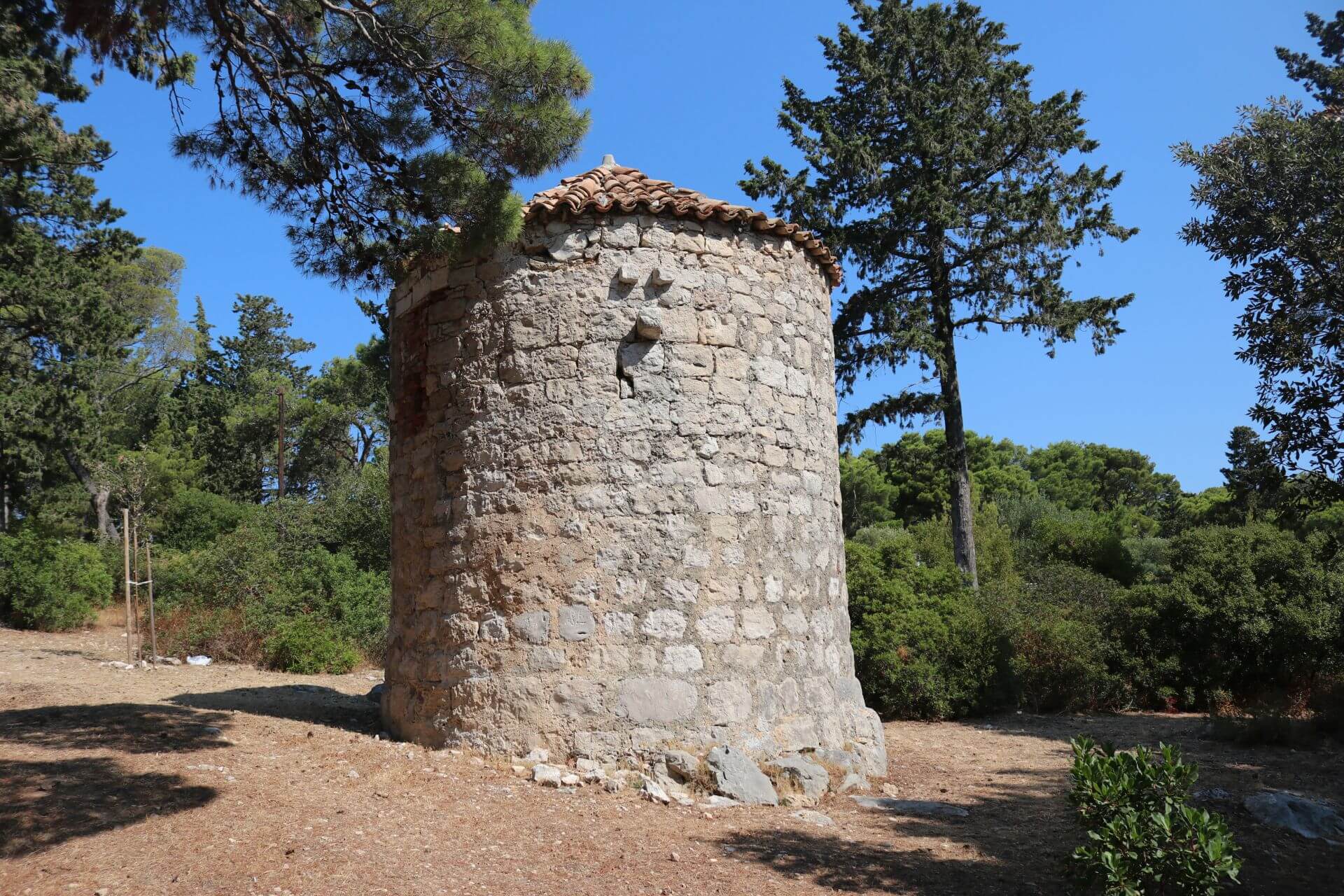
The former church tower, the former weather station © Nina Lelas
Right next to it, back in 1858, famous Croatian nature scientist Grgur Bučić established a weather station, one of the first in the entire country. Being part of the Austro-Hungarian monarchy at the time, the station was part of the Austrian network of meteorological stations. Thanks to the measures taken under Bučić's expertise, the sunny days of Hvar are not a market scheme to attract tourists in need of clear sunny weather, but an actually very well-advertised scientific fact. In addition, for his experiments with sponge development, Bučić received global recognition, and seven species of sponges, crabs, and fish were named after him. He published articles regarding meteorology and oceanography and also studied insects and marine life. He also pioneered numerous archaeological digs across Croatia, including on Hvar.
Back in 2018, as TCN wrote, the station marked 160 years of existence. Organised by the Hvar Town Library and State Meteorological and Hydrological Service, this celebratory event revealed some interesting historical moments from and about the station. These include polar lights, storms, falling meteors, earthquakes, vineyards destroyed by hail, sunken ships, and epidemics. In 1884, based on data from Bučić himself, climatologist Julius von Hann (often looked upon as the father of modern meteorology) published his work ''Klima von Lesina'' (The climate of Hvar town), the first-ever such book on a Croatian town or area.

Grgur Bučić © MuzejHvar.com
Today, the Bučić tower is locked, and the path to the church now serves as an outdoor cinema, without that many interesting things to be seen. Could the tower be renovated and showcase the instruments this pioneer station used in the past? Perhaps, and it would certainly be a cool addition to the already extensive offer Hvar has for its visitors.
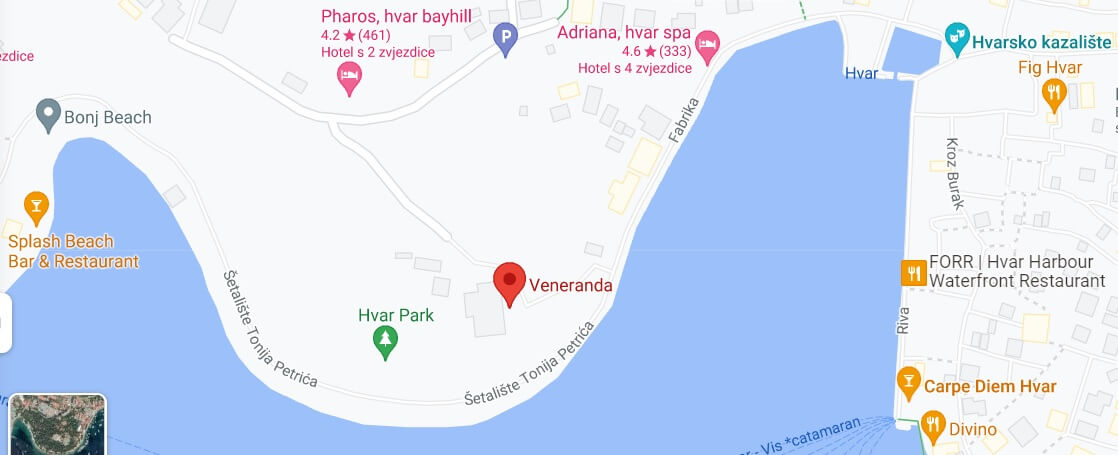
Veneranda, location of the station, screenshot / Google maps
While waiting to see what the future may bring, it's worth taking a look at this station, not far from the waterfront and the nearby beaches. Express some gratitude and dedicate a refreshing swim to Bučić himself, a brilliant man whose findings gave us scientific, statistical reassurance that Hvar is the sunniest place in all of Croatia.
Learn more about Hvar on our TC page.
For more about Croatian history, follow TCN's dedicated page.
Injured Turtle in Korčula Bay: Rescued, Treated, Ready For New Life
July 17, 2021 - An injured turtle in Korčula Bay sparked immediate action by locals and vets, seeing the turtle being saved and getting a second chance.
Like many other places, towns, locations, and neighborhoods, Korčula also has groups on social media to ease communication among users who share the same place of daily life. Friday afternoon saw residents of Korčula have a big heart, and despite might being stereotypically perceived as laid back, chilled chaps (as for every Mediterranian-culture impacted people), they were quick to act when needed.
A user under the name Antoni Ja, one of the members of the FB group Oglasnik otoka Korčule (Korčula Island Message Board), reported on a 20 kilo turtle floating in the sea in Žrnovska Banja. Floating, the keyword.
„Please do something, so it doesn't get hit by a speedboat or some maniac“, said Antoni Ja.
Other users immediately started to worry if the turtle was injured, and the name of a local vet Vilović was suggested as an address to report the issue.
Sure enough, Vilović examined the turtle, and the 20-kilo turtle turned out to be over 50 kilos. Not quite often seen in shallow waters, but nevertheless a normal turtle size in the Adriatic sea.
„It had a head wound, most likely from the propeller. It is on its way to the Specialist in Split by catamaran“, briefly commented Vilović.
Indeed, as the photo on the FB group published by Ana Jurić shows, the turtle was on its way to Split.
„Kudos to the vet and the guys that organized all this, and the turtle is huge!“ wrote Jurić.
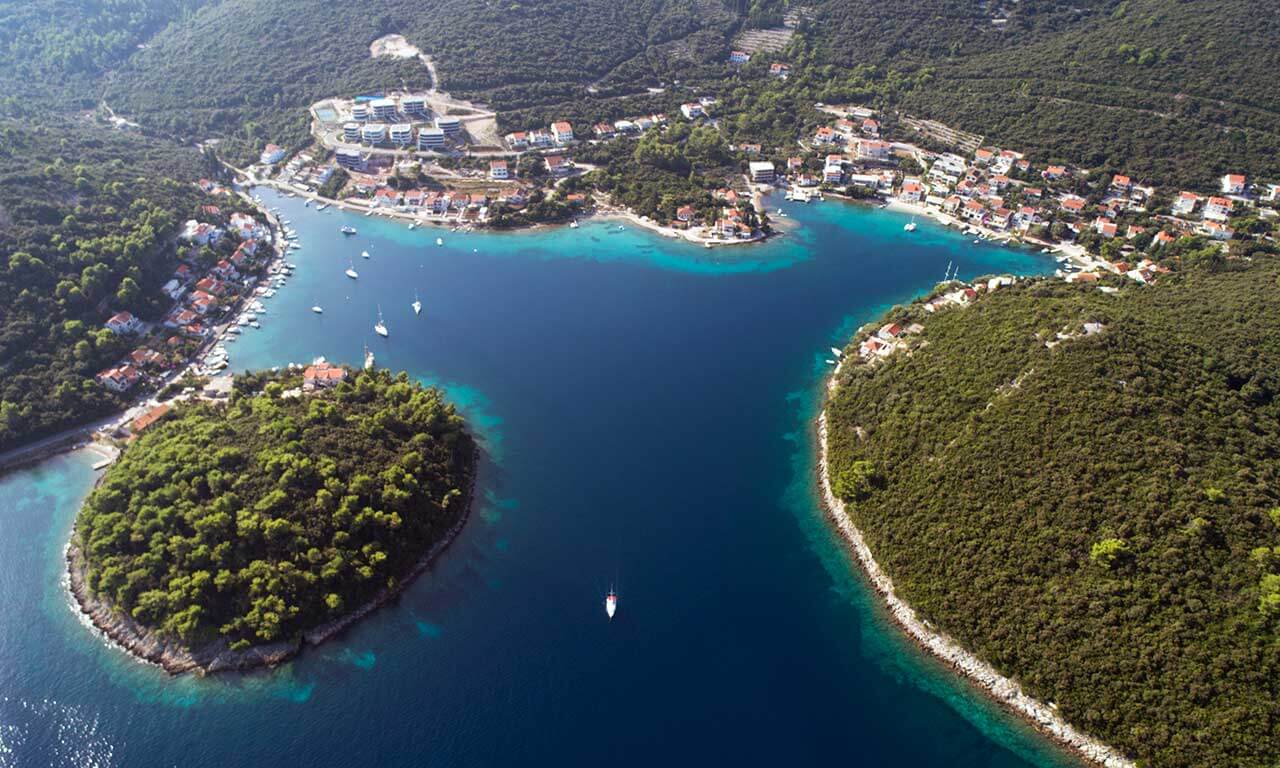
Zrnovska Banja where the turtle was spotted floating © Visit Korcula
Dr. Mario Gavranović, head of the VET VISION clinic in Split, confirmed that the turtle arrived on Friday night. „It should arrive in an hour or two. The propeller injury is an old wound and I will first have to examine it to see what is the proper way of treatment“, said Dr. Gavranović.
When contacted on Saturday morning to provide more information on what happened to the turtle, dr. Gavranović wasn't in his office. As confirmed by Aquarium Pula, the reason was Gavranović took the turtle to the aquarium which also has a Marine turtles rescue centre.
"The turtle is alright, on its way and should be in the Centre around midday", briefly confirmed Aquairum Pula.
Pula's rescue centre has been active for around 17 years (with turtles being strictly protected in Croatia since 1995 as one of the most endangered animal species), and Morski.hr wrote in 2019 how the centre cured over 100 turtles.
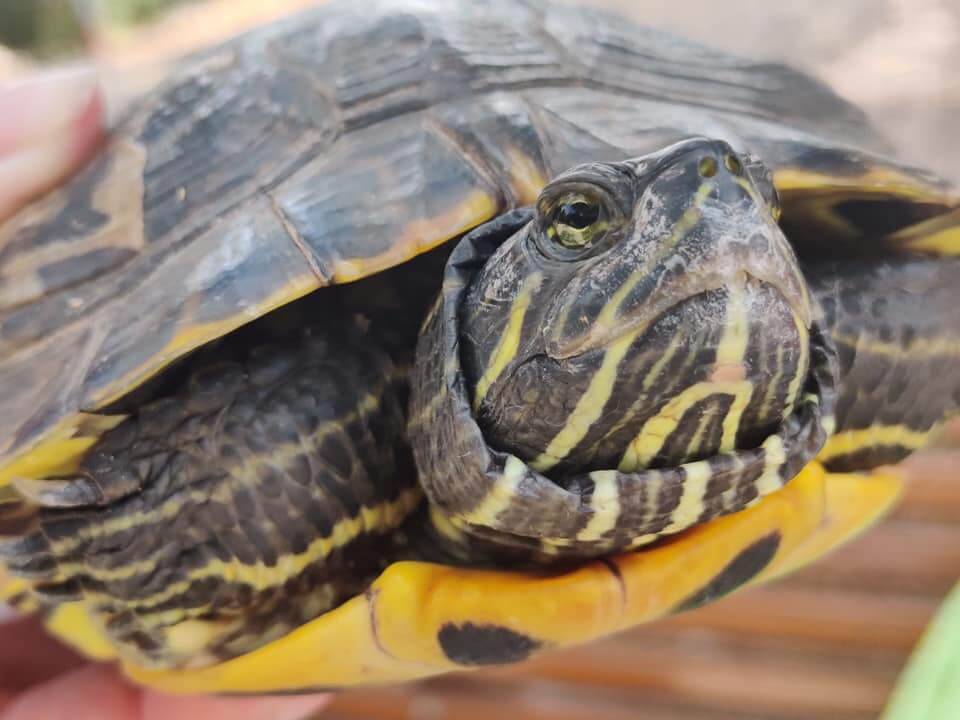
One of the many rescued turtles by Marine turtles rescue centre © Aquarium Pula
Croatia loves its animals
With vets displaying their expertise, locals on Korčula once again demonstrated their compassion and big heart when it comes to animals. And that compassion is not different from the general mood in Croatia.
With the nourishing of the recently deceased stork Malena being the most famous story of love between Croatians and animals, there were plenty of other examples too. From rejoicing every time whales or dolphins are spotted, when sheep visited the Zadar mall or when a Croatian reality TV star Jasmin Kunišinac raised a fox.
Unfortunately, Croatia also records cases of animal cruelty, such as the poisoning of cats and dogs, and each time Croatian public met it with a fierce backlash and anger for such acts.
Despite quite often arguing about everything imaginable and unimaginable, Croatians also express solidarity with each other when things get tough. For instance, many cities canceled their new year celebrations and relocated the money to Petrinja following its earthquake, as well as Croatian entrepreneurs too. But, many more instances of help were noted over the years.
Learn more about Korčula on our TC page.
For more about animals in Croatia, follow TCN's dedicated page.
Total Croatia in Ukrainian: Word of Support by Former Ukrainian Diplomat and Writer Jurij Lisenko
July 12, 2021 - As the Total Croatia site offers translations on all things Croatian in various languages, former diplomat and a famous Ukrainian writer Jurij Lisenko gave his opinion on the Ukrainian translations of the articles. Check out the video, acquired by Ivor Kruljac and edited by Jose Alfonso Cussianovich.
The tourist season is underway, and the goal is to get tourists from all over the world while providing safety in challenging times of corona – both for locals and visitors. As TCN reported, despite the tourist season in 2021 already being 58% better than that of 2020, it also seems that even with predicted Croatian tourism growth for this year, 2019 levels are very far.
With these predictions, Croatian tourists boards should do as much as possible in informing and promoting Croatia to have the best possible outcome. But given that doesn't always work out for the best, TCN is here to help.
Total Croatia: TCN's Multilingual brother
Well, more precisely, not TCN but rather TC or Total Croatia, if you will, the sister site that explains Croatia in detail. TC offers you in-depth articles to explain Croatia from head to toe: What you need to know about Croatia, how to come and travel around the country, detailed views on Croatian destinations, and info on everything you can see and do during your stay.
In addition, articles are translated to various European and world languages!
Word of support from an established Ukrainian writer
One of these languages is Ukrainian and in an effort to see how we did, we reached out to a Ukrainian writer Jurij Lisenko.
„Regarding the text itself, it is really well written. It contains very significant specific business information on various aspects, such as finding apartments or finding jobs for foreigners. At the same time, it is written lively, objective, bit ironic, but with great love for Croatia“, said Lisenko commenting on the Ukrainian translation for the article „Living In Croatia“.
Check out the video to see his verdict for yourselves.
Jurij Lisenko sends a special greeting to Total Croatia News and Total Croatia from Ukraine.
Famous Ukrainian writer helping Croatian writers
In a pool of quality Ukrainian writers, Jurij Lisenko is particularly interesting, not just for his excellent writing, but also as he was a former diplomatic advisor at Ukrainian Embassy in Zagreb.
As Akademija Art wrote, Jurij Lisenko was born on May 9, 1958 in Kyiv. Educated in Slavic languages, he lectured the Ukrainian language as well Serbian-Croatian in the Journalist faculty in Kyiv from 1980 to 1997. He also published over 20 scientific papers on philology and is a known poet publishing under the name of Jurko Pozajak. In 1998 he moved to diplomacy and worked for the Ukrainian Embassy in two terms (1998-2002 and 2013-2017), and also in Embassy in Belgrade, Serbia, from 2004 to 2008. He was also a speechwriter for Ukrainian president Viktor Juščenko and continued to work for Ukrainian's Ministry of Foreign Affairs since 2017.
Lisenko captured the attention of the Croatian public when along with his daughter Daria, he made new Croatian words, and the two co-authored a book of poetry for kids „Ide Svašta!“ (Everything coming).
As Večernji List reported back in 2016, their book was published back in 2002, and an expanded edition was printed in 2014.
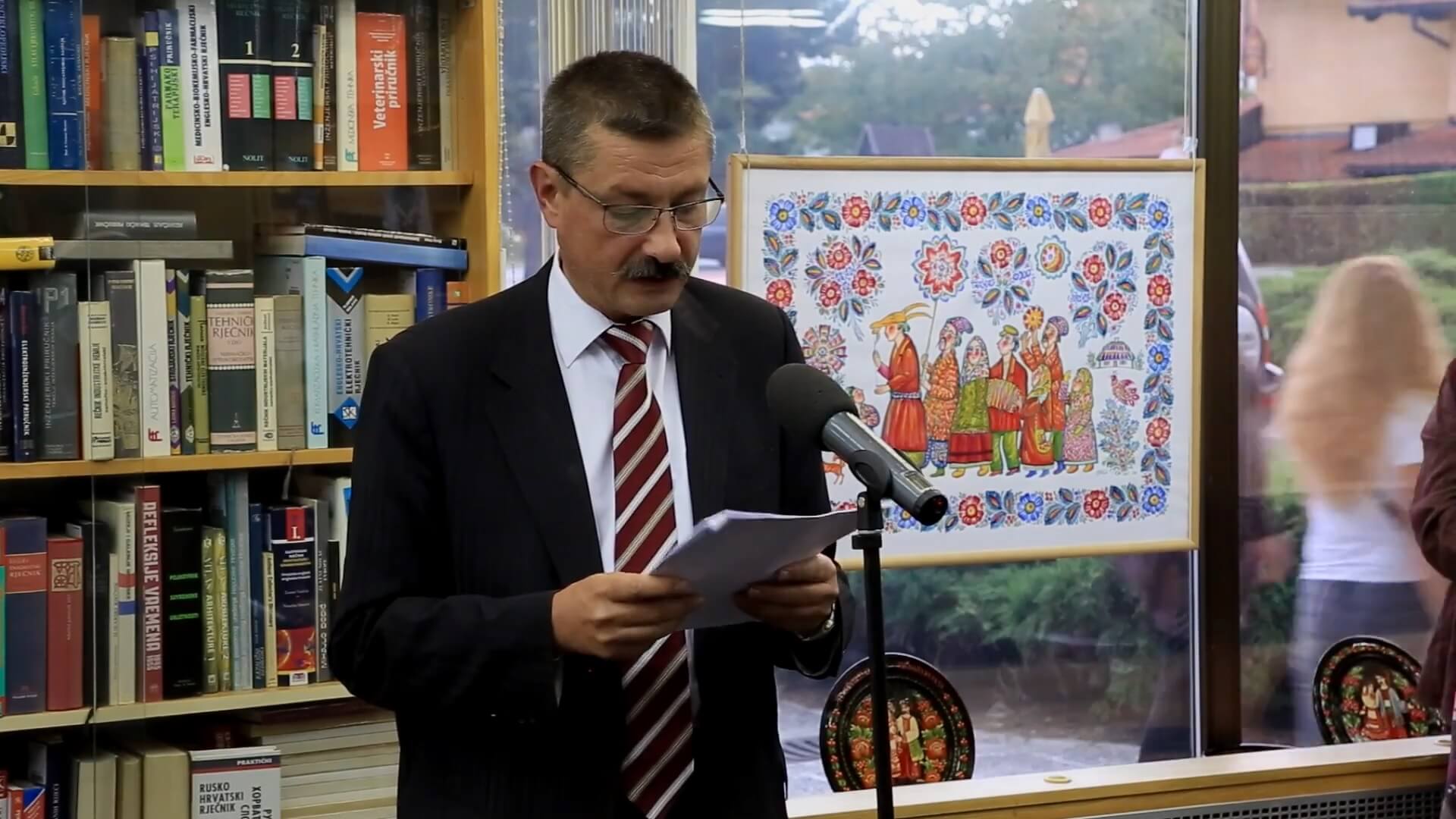
Jurij Lisenko reading his poetry at the exhibition opening of Ukrainian folklore "Petrikivski Rospis" in Samobor screenshot / Gradska knjižnica Samobor
Apart from that, the Lisenko family was very active and beloved on the Croatian poetry scene, and apart from presenting Ukrainian culture in Croatia, Jurij also introduced Croatian writers to Ukrainians.
The best instance of that is the Ukrainian translation of Croatian slam poet and writer Žarko Jovanovski and his short story collection „Tales of Lenin and Stalin“.
In addition, the good cooperation of the Ukrainian and Croatian writers is evident in an international literary magazine, Alternator, published by Sisak's Association For Alternative Culture, where Lisenko is a member of the editorial staff.
And the relevance of Lisenko as a partner for promoting Croatian writers in Ukraine was perhaps best described by the head of Edicije Božičević publishing house, Josip Ivanović.
„For a number of years, I knew a poet, diplomat, and genius Jurij Lisenko who I deeply respect. He is known in Ukraine more or less as an Avant Gard poet. And he published his book a long time ago. We walked around Lviv, and when there is a Lviv Book Fair, there are quite a lot of people and the atmosphere is as on a festival. Students approached him asking him to sign a book that he, as a poet, published 20 or 30 years ago. I never saw anything like that in Zagreb“, recalled Ivanović for Podcast Sekstant.
This shows not only that Ukrainians in general respect literature more than Croatians, but it is evident Lisenko is quite the rock star on the scene.
„I was very happy to see on Total Croatia a text on possibilities of foreigners in Croatia and that it was translated to 16 or 15 languages, including Ukrainian. I was very pleased with that. This means that connections between Ukraine and Croatia are significantly stronger. Indeed, in the last 10-15 years, Croatia became a favorite holiday spot for Ukrainians“, commented Lisenko.
Ukraine and Croatia – similar and friendly
With some differences between the Soviet Union and Yugoslavian communist practices, both Croatia and Ukraine share the same history of denied independence under a multi-national regime.
Đuro vidmarović, Croatian writer and former diplomat, told Laudato TV how the first Croatian president Franjo Tuđman appointed him as a Croatian Ambassador to Ukraine and how he was afraid as he wasn't sure what will await him there. But in the end, Ukraine for Vidmarović became a great topic and a happy period of his life. 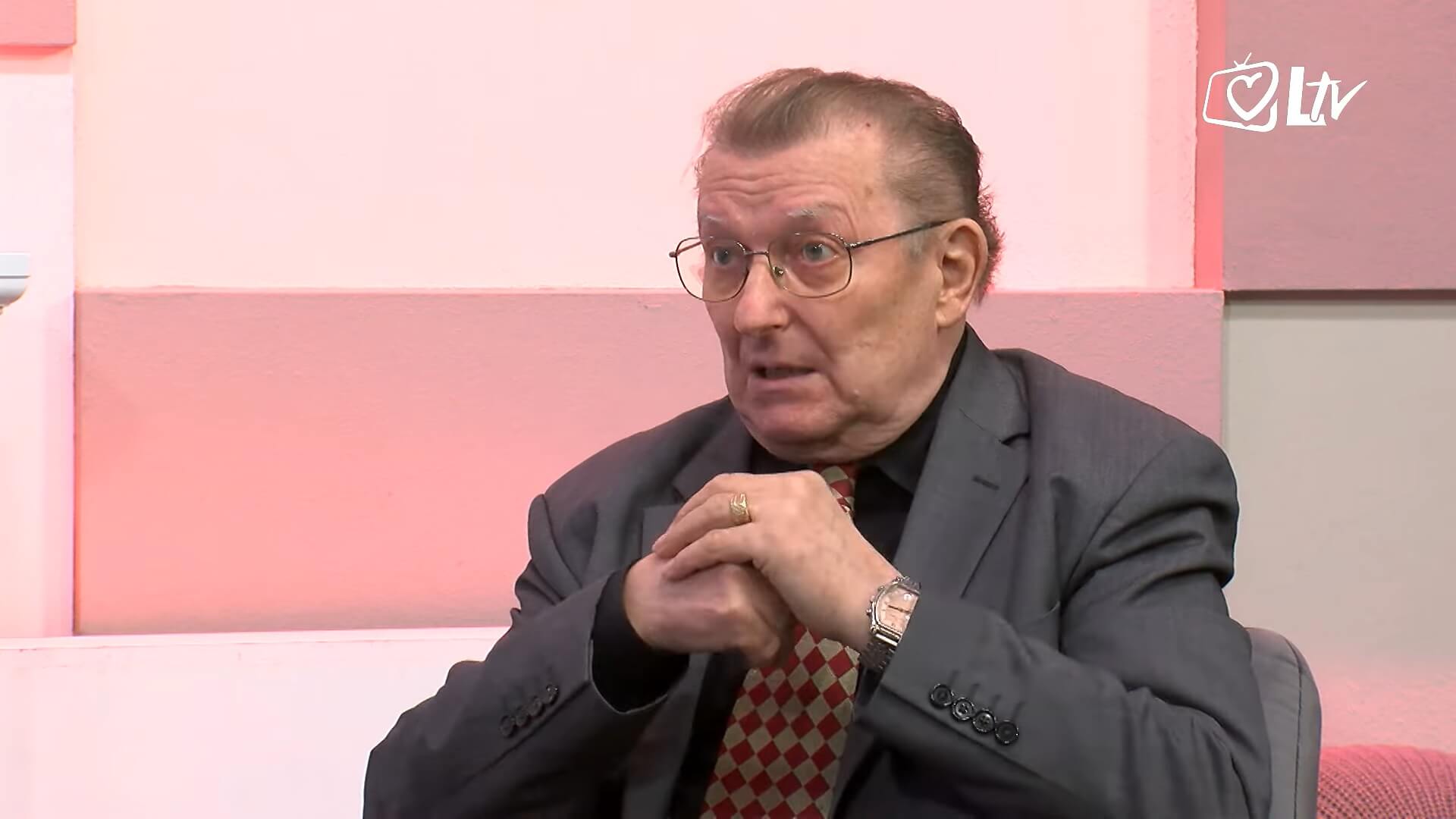
Former Croatian ambassador in Ukraine and writer Đuro Vidmarović, screenshot / LaudatoTV
„After I very quickly learned Ukrainian, a big area of Ukrainian culture and heritage opened up to me“, said Vidmarović adding that he met a lot of good colleagues there, particularly writers. As it was his mission to present Croatia, he also learned a lot and remained fascinated with the country of his mission.
„Ukraine is big, huge, contradictory, magical, unique, with a culture that makes it impossible for someone to stay indifferent. You come to Kyiv, and you see the Saint Sophia Cathedral from the 12th century with beautiful frescoes and architecture. My god, someone had to build it, had a sense for it. It was a civilization stronger from the majority of European countries at the time“, said Vidmarović for Laudato TV mesmerized with Ukraine he researches even to this day.
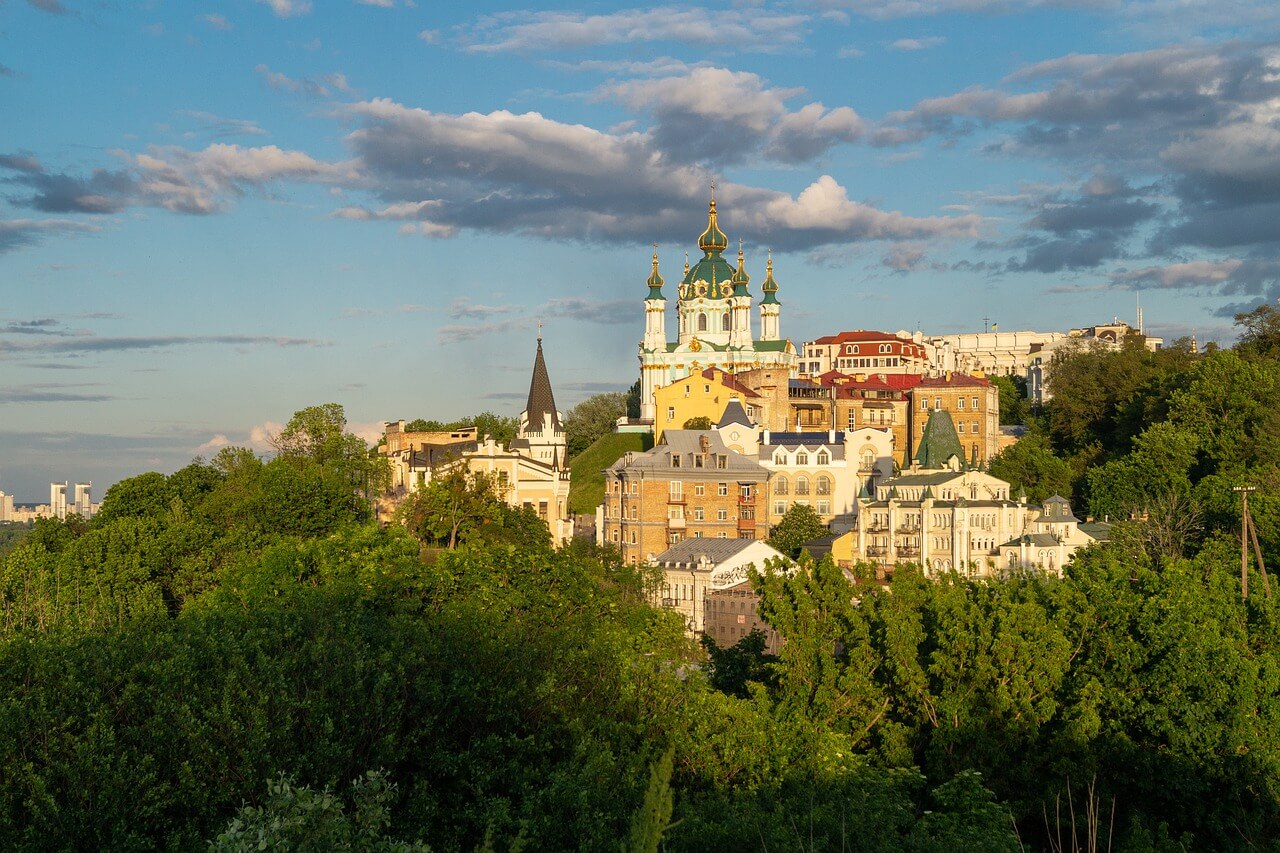
Breath-taking view of Kyiv © Pixabay
As Lisenko acknowledged, Croatia is also very famous in Ukraine too.
„Ukrainians discovered Croatia for themselves. Croatia is a beautiful country. You know that for yourselves. But, for Ukrainians, it is particularly pleasant in Croatia that they don't feel like strangers. But, for Ukrainians is a particular joy that languages are similar and Ukrainians, after several days, start to orient themselves in the language, to understand a bit, and can communicate with Croatians in cafes, restaurants, shops, streets, anywhere“, explained Lisenko for TCN.
He added that a lot of Ukrainians also come to Croatia searching for a job. While this may not be the best thing from the perspective of the Ukrainian economy (same as Croatians leaving Croatia isn't great for Croatian economic interests), Lisenko recognizes that the trend „also brings our two nations close“.
Discover Croatia in your native language
Apart from the article Lisenko commented on, Життя в Хорватії 2021: Витрати, дозволи, стиль життя та зустрічі з людьми, Ukrainians can also follow latest reports on COVID-19 in Croatia as well as 10 речей, які роблять Хорватію найкращою країною (or for English audience, 10 Things Croatia Does Better than Anywhere Else).
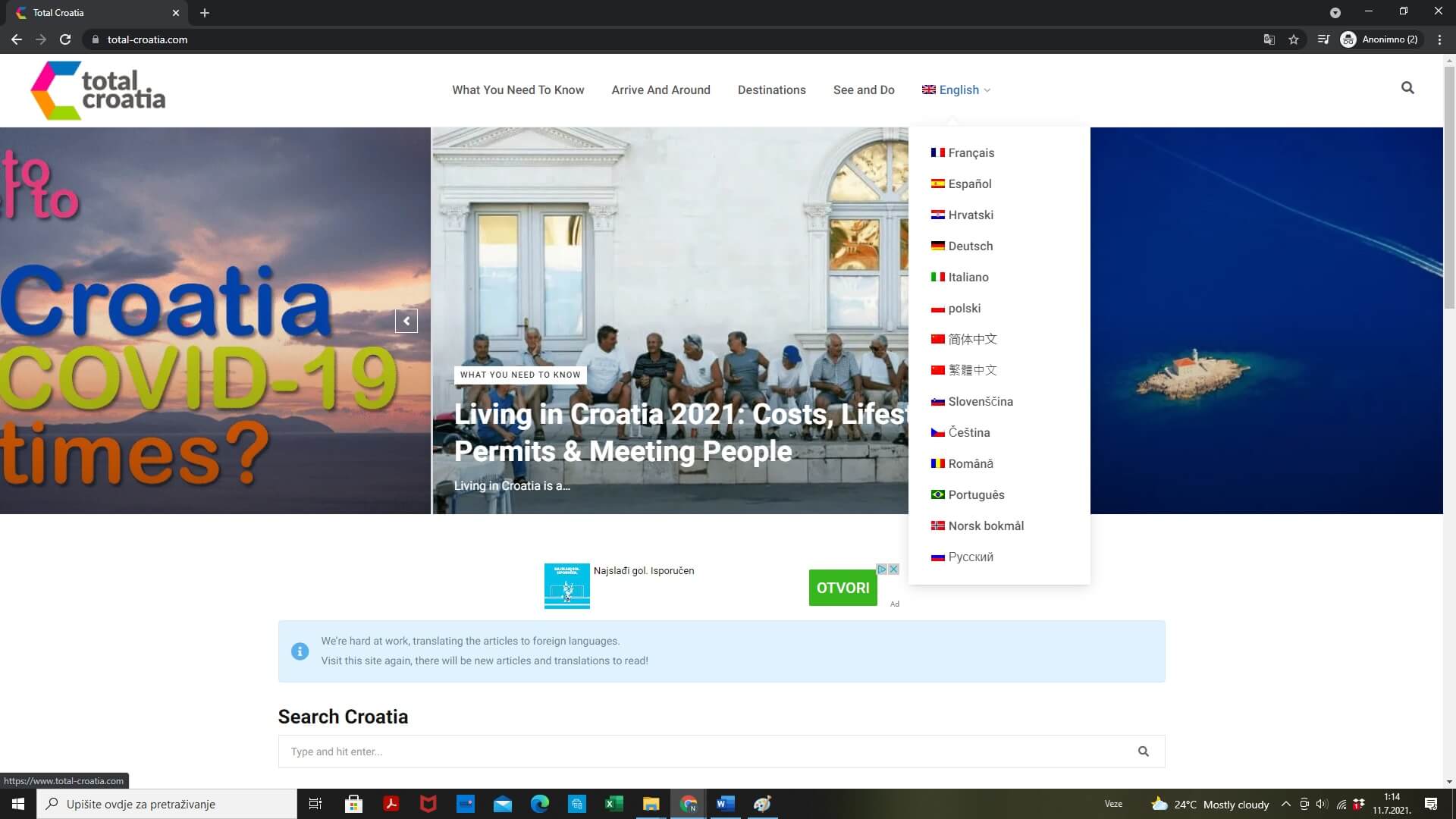
View of Total Croatia site and languages
So far, only these three articles are available in Ukrainian, but no doubt the future will bring more to make Croatia more accessible to beloved Ukrainian visitors.
Currently, TC counts 15 languages with the most translated content from English: Croatian, French, Spanish, German, Italian, Polish, Chinese (both traditional „zh-Hant“ and simplified "zh-Hans"), Slovenian, Czech, Romanian, Portuguese (Brazilian), Norwegian (Bokmål), and Russian.
If you want to learn more about diplomatic relations of Croatia, and everything regarding diplomacy and Croatia, check out TCN's series "Friends of Croatia" by Ivor Kruljac.
For more about Ukraine in Croatia, follow TCN's dedicated page.
Brick Yard: Part Exhibition, Part Party, Complete Post-Lockdown Artistic Showcase
June 29, 2021 - A unique event for the Croatian art scene, Brick yard, a meeting point between an exhibition and a party, features four Croatian artists presenting their work and making a statement that not even coronavirus can stop art.
EDITOR'S NOTE: The event was moved to July 3, due to a bad weather forecast
The coronavirus pandemic and the experience of lockdown were either an inspiration for artists or those circumstances just made it easier for them to focus on their work as everything was closed and isolated. Much like almost everything else, the art and culture sector wasn't immune to the pandemic's heavy blow.
With art events and exhibitions still facing challenges, Jasmina Krajačić, Mario Romoda, Apolonija Lučić, and Zorana Unković, instead of waiting for the support by the culture ministry or for galleries to return to being fully functioning institutions, took their faith in their own hands.
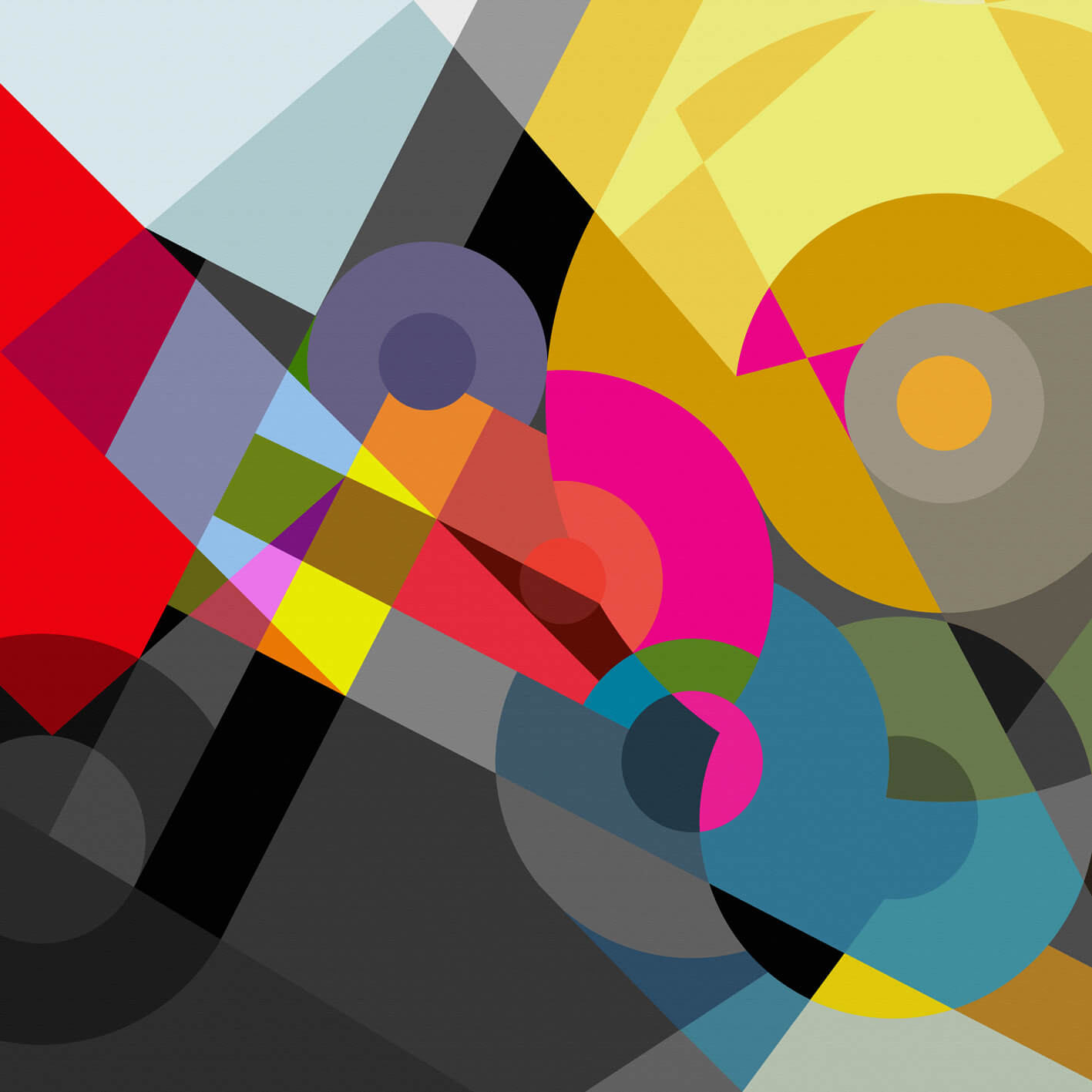
© Jasmina Krajačić
Their initiative for cultural growth, titled Brick Yard, will see these artists present their work in a garden located in Lomnička 1, in a beautiful garden that truly looks like a piece of art itself. Observing art like a plant that, in order to grow, needs to be watered constantly, the collective will showcase their work on July 1 from 5-9 pm.
''The four of us have studios at the same address. It's an old house with quite unusual dimensions and a big garden hiding the view from bypassers. That garden looks like it fell from mars, and it doesn't fit in with the series of new buildings recently built in the neighbourhood, and not a lot of people know about it,'' explained Krajačić, stating that this is the true charm of this project.
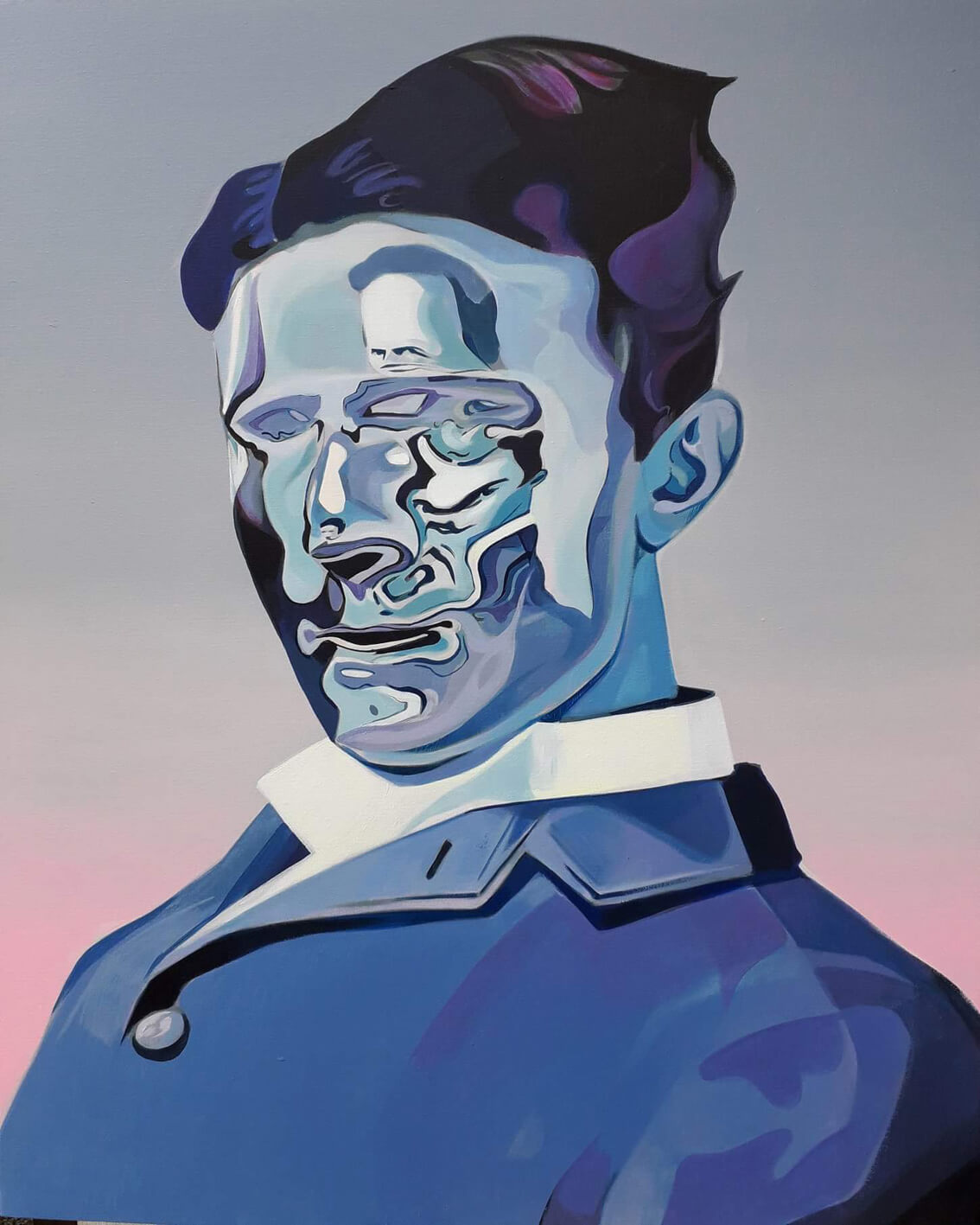
© Mario Romoda
All four artists are renowned names in the world of Croatian contemporary art, and it's interesting to observe different takes on the artistic expressions they have. Romoda is into painting, Krajačić's main focus is geometry and design, Lučić navigates toward drawing and illustrations while Unković is skilled in street art. Echo, reflection, self-therapy, comic strips, and geometry are some of the aspects artists pointed out Brick Yard will feature.
''Since the start of the lockdown, we hung out and worked in that space, killing some time in uncertainty, waiting for the outcome of this whole situation, while also creating new work with our creativity and discipline, which we decided to present in the garden,'' continued Krajačić.
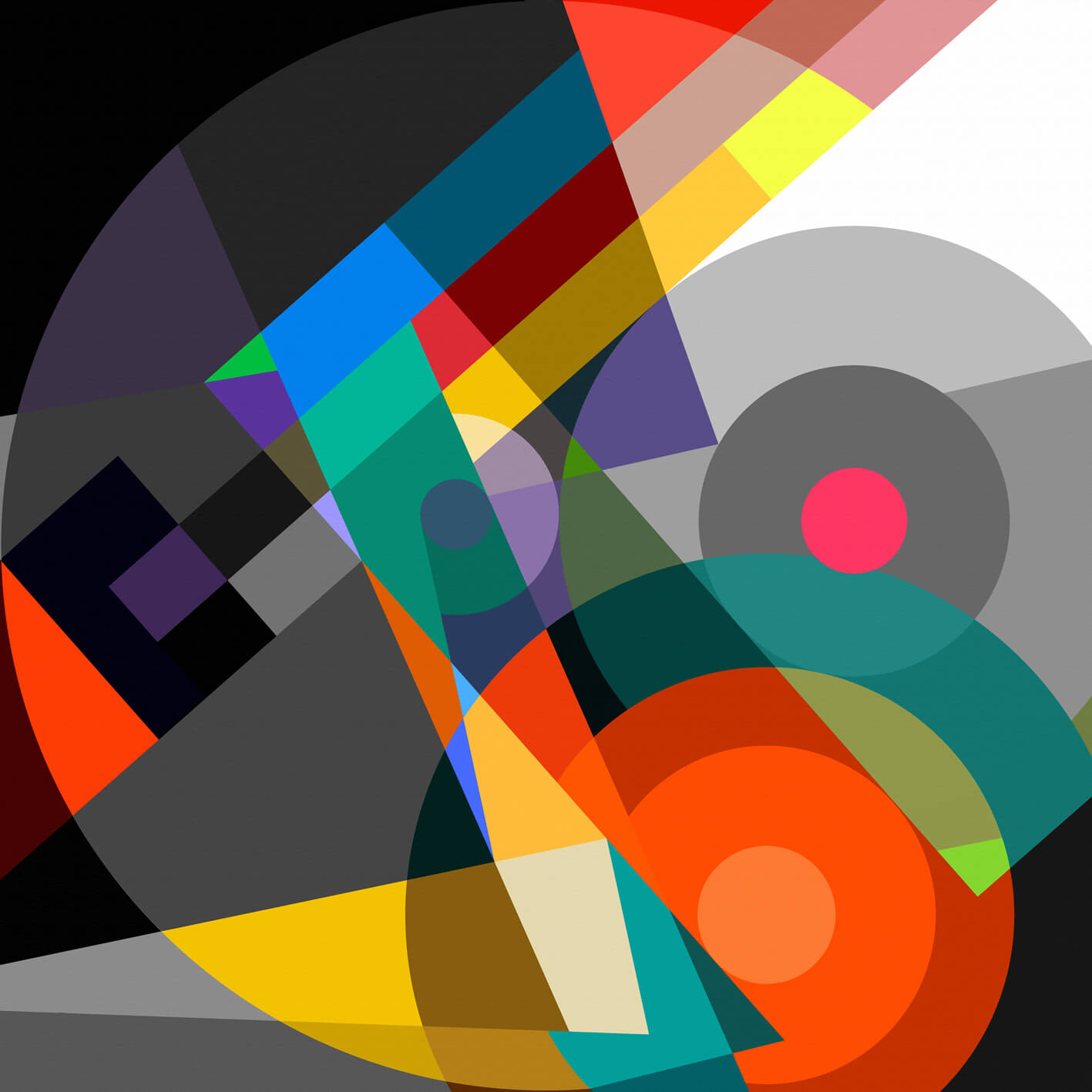
© Jasmina Krajačić
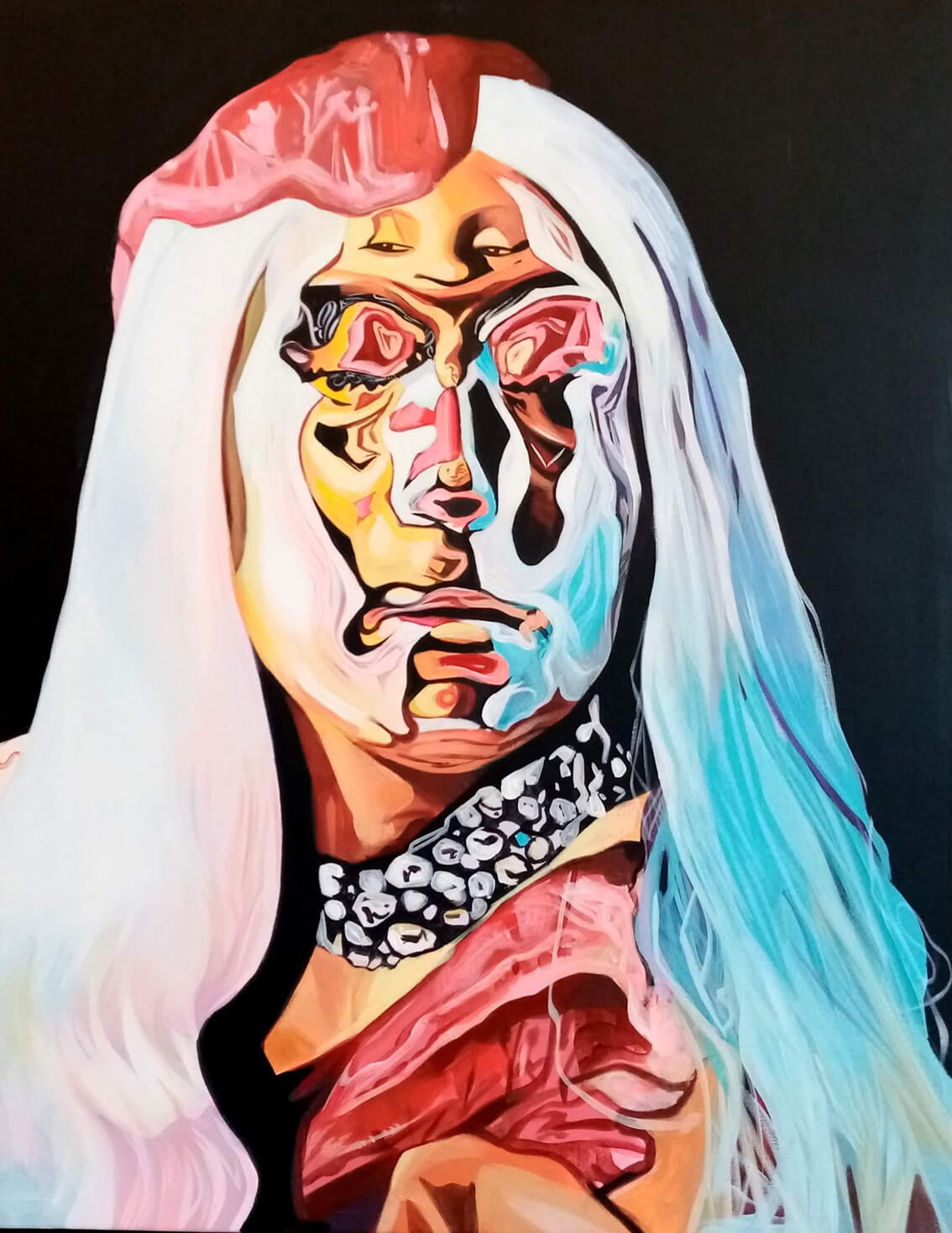
© Mario Romoda
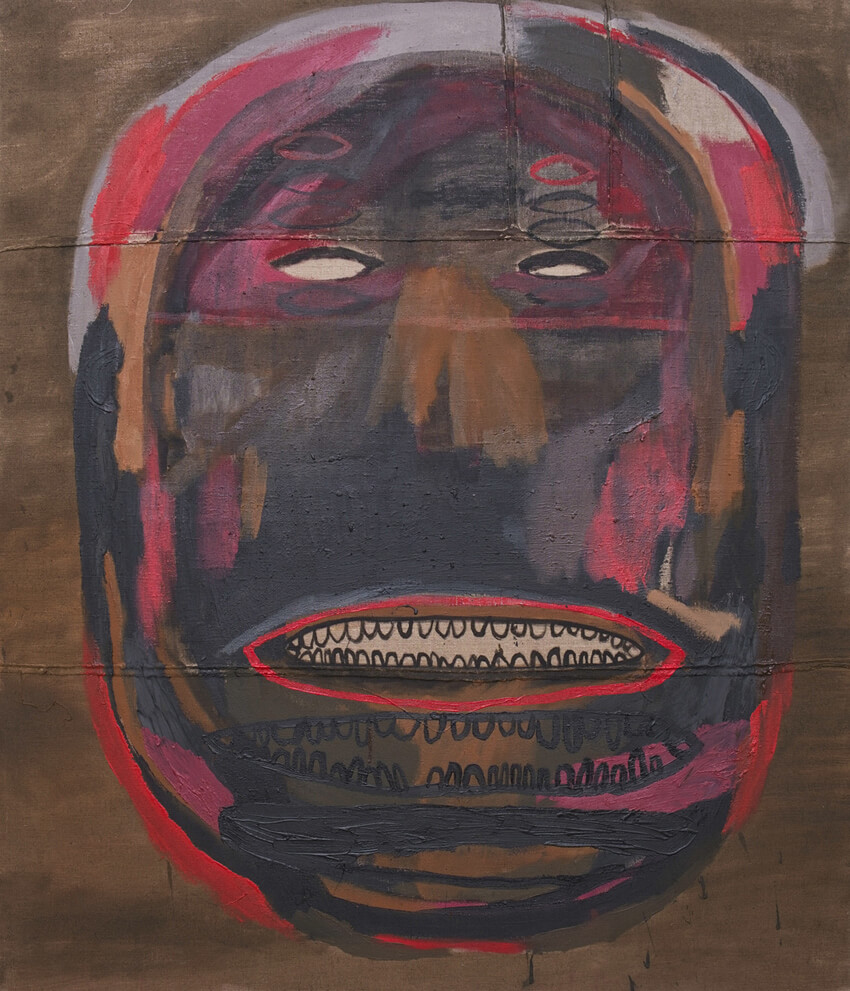
© Zorana Unković
The event, which lay somewhere between an exhibition and a party, saw the artists invite business associates, gallery workers, art critics, and several friends in the hope of ensuring the support the Croatian art scene desperately needs.
''We invited them for an afternoon in an unconventional environment, without big talks and classic gallery protocols,'' pointed out Krajačić, concluding that this type of event is not typical at all on the Croatian art scene. This unusual, experimental event is just as art should be, and the message that the Brick Yard collective differs in expression and stands united in their message is loud and clear.
''Art cannot be stopped as it feeds every atom which thirsty for creative progress. Without it, we're fragile and empty,'' they concluded from Brick Yard.
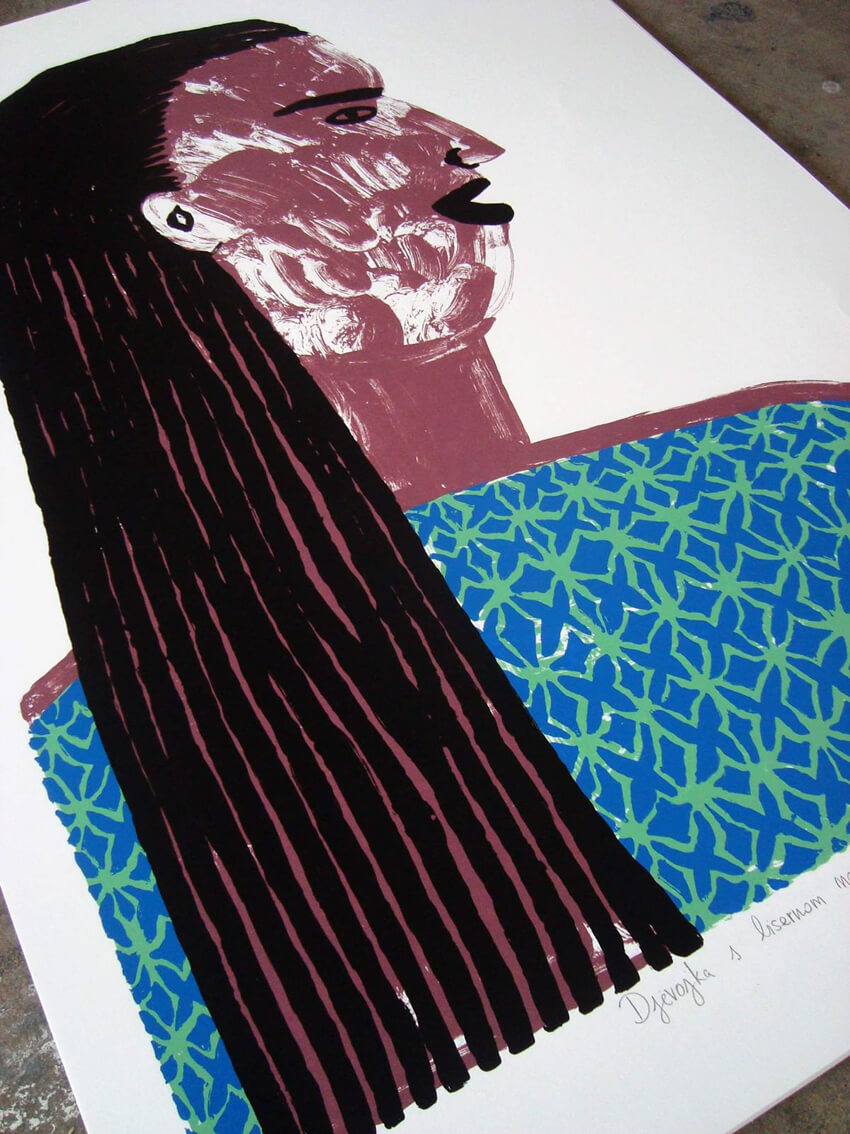
© Apolonija Lučić
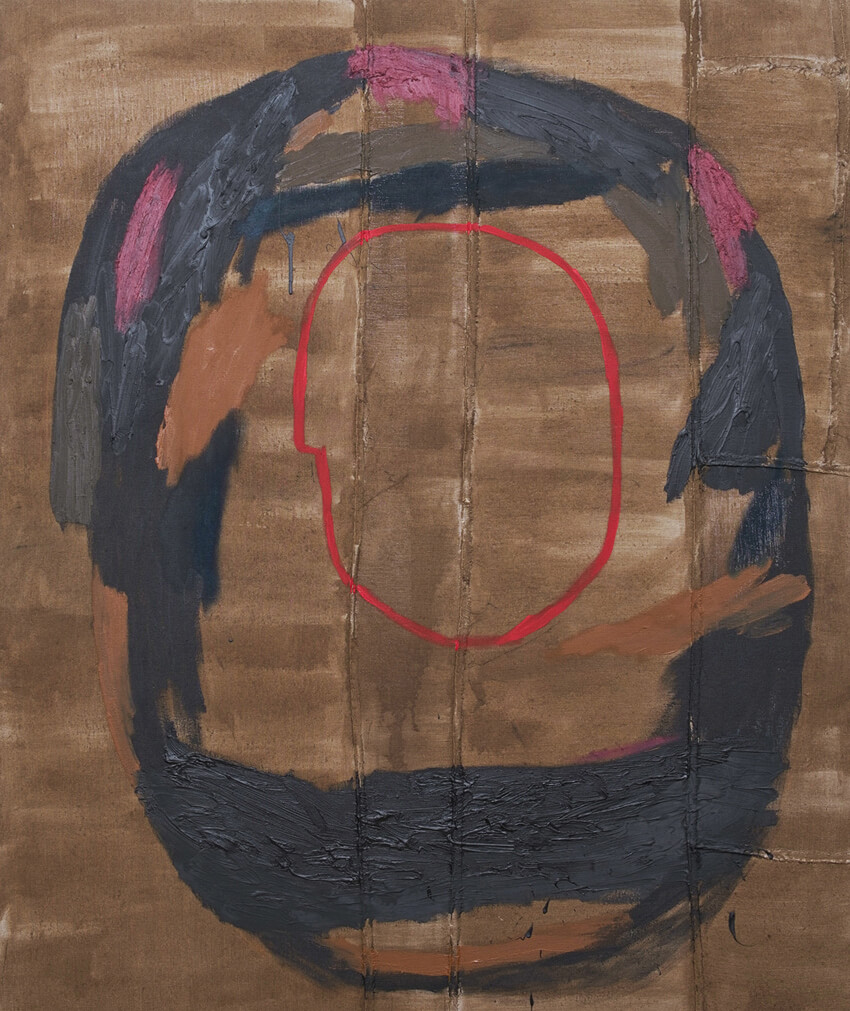
© Zorana Unković
Learn more about Croatian Art Galleries in Zagreb, Dalmatia, Istria & Slavonia on our TC page.
For more about art in Croatia, follow TCN's dedicated page
Quarantine Escape or Something More: How French Youth Live In Croatia
26 June 2021 - One TCN intern interviewed four young French people who recently moved to Croatia about their everyday life, impressions, and preferences here. A look at how French youth live in Croatia.
They came to Croatia for different volunteering projects regardless of coronavirus pandemic, but likely would recommend their new abode to fellow countrymen as a good place to survive quarantine. The luckiest of them Mathias (26) got a chance to arrive in Split in February 2020, Axelle (22), and Clemence (22) joined him nearly a year later. Mathilde (23) came to Zagreb sometime between this period, in September 2020.
Is the weather similar to Nice?
The climate is continental – low temperatures in winter and high temperatures in summer. “In Zagreb, there is often a fog during the winter,” Mathilde shares. Thick fog looks unusual for newcomers and from time to time creates true ‘Silent hill’ views in Zagreb country. “It’s not windy, but you don’t see the light of the sun during two months,” she continues.
On the contrary, Split is a windy city, however, even during the winter the sun shines a lot. There are winds in France, Mathias notes. He fails to find a French analog to the well-known Split ‘bura’, a cold north-west wind that long till 10 days in winter. But there is ‘mistral’ wind in France, similar in the name and effects to Croatian ‘maestral’ that comes to Split from the north-east in summer.
If you’re sensitive to weather, you’ll probably feel winter winds in Split. Summer winds will help you. The wind cools the atmosphere, thus summer heat is handled easier in the Dalmatia. Axelle and Clemence who came to Split for spring and summer characterize the weather solely as perfect. Both moved from the northern part of France and began to enjoy sunbathing here. Mathias compares the climate in Split with Nice. “Similar in many senses… Apart from the landscape – there are more islands and mountains in Croatia,” he said.
Is air-con needed?
My French respondents almost don’t use air conditioning. Mostly they don’t have a need for it. Axelle actually doesn’t know whether there is any air conditioner in their office. The office is situated on the first floor, it’s cool there. As for apartments it’s normally equipped with air conditioning systems. However, girls in Split are satisfied by shade from the inner yard of their house. During the summer, they just open windows wondering for what purpose these double shutters are designed. They’ve never met such a design in France. Mathilde doesn’t use the air conditioners for ecological reasons. It pollutes the atmosphere a lot.
Why do you apricot jam in a croissant?
Young people are usually simpler with food. Two of them are vegetarians, but they easily adapted to Croatia. “In France, we consume a lot of cheese,” Axelle claims. You can buy some basic cheese here like Emmental, you can buy soft cheese like mozzarella and feta. Mathias who isn’t a vegetarian, but a foodie confirms that fact. “There is a huge lack of French cheese .” You’ll survive, but you’ll miss cheese. “I need cheese in my life,” Axelle says and goes to buy it without looking at brands.
On the plus side, there are many fresh vegetables in Croatia. Mathilde enjoys visiting open markets – you can talk, practice Croatian, create links with people, and support local producers. And prices are cheaper than in the supermarket. Furthermore, the open market challenges your traditional tastes. While as in supermarket you’re guided by familiar names on the shelves, open market encourages you to improvise and try something new. Clemence started to eat much more vegetables in Croatia. Mathias who also visited the fish market has enriched his nutrition with seafood.
Food prices in Croatia are lower than in France. However, moving here you should configure your expectations correctly. Prices are lower, but not really low. And, of course, this isn’t about imported items. As a result, Clemence eats less ‘Nutella’ here. Hopefully, it was not a huge loss. Mathilde praises Croatian pastries, whereas she loved French pastries as well. ‘Burek’ is a universal pleasure; it has vegetarian options with cheese or spinach. ‘Burkifla’ or ‘strudla’ are a nice choice for the sweet tooth. The only stuff you should be careful with is a croissant. In Croatian bakeries, they often offer croissants with apricot jam (‘marelica’) and French often describe its taste as disgusting. Just clarify on a cashier that you want a normal croissant!
Wine is wine, if you do it in France, you’ll probably die!
Apart from croissants with apricot jam, one more strange thing the French can occasionally order in a cafe is coffee with cold milk. It’s better to specify what kind of milk you want – hot or cold, because during the summer season Croatian cafes often serve coffee with cold milk as in southern Europe. Axelle came from northern France and never expected to have something hot ordering a coffee. Otherwise, typical for the Balkan region ‘Turkish coffee’ is rarely found in modern Croatia. Expats including my respondents from France don’t like it. “First 2-3 sips are ok, but next you feel this nasty coffee ground…”
A coffee drinking culture must be attributed to the advantages of life in Croatia. You can take one coffee and stay for 3 hours. “You can’t do it in France. If you stay more than an hour, it’s anticipated you will order one more coffee or another drink,” Axelle explains to me. And it’s not only about the economics of cafes. In France, you sit in a cafe for half an hour and then go back to your business. In Croatia, there is this chill way of life. You drink a coffee, chat, and sunbathe, and don’t hurry. Croatians consume a lot of coffee. When it’s too much for Clemence and Axelle, they switch to beer. Mathilde hates coffee, however still has a lot of Croatian friends. She drinks hot chocolate. She misses 'churros’ to hot chocolate.
Mathias spent enough time both in Split and Zagreb and would prefer Zagreb cafes and bars rather than Split ones. Such places have more variety, events, and different peoples there. Mathilde who is been living in Zagreb for almost a year doesn’t attach importance to it. She’s not a huge bar lover. She settles for ‘Antibar club 44’ where she holds her French evening with students. Axelle and Clemence also have their favorite place to drink in Split. In ‘Tri volta’ there is no crowds or fancy drinks as ‘ice coffee’ or ‘Aperol spritz’, but the location and atmosphere are great.
In public drinking beyond bars and its terraces, the biggest surprise for the French was a way of drinking wine. Croatian youth usually dilute wine. Red wine plus coke has the special name ‘bambus’. White wine is diluted by sparkling water. Both kinds of wine can be watered down. This practice has a simple explanation: diluting enhances the taste of cheap wine that youth usually buy. Also, this practice is known in Italy and Spain, but not in France. Wine is wine, Axelle claims emotionally. “If you do it in France, you’ll probably die!” Clemence echoes.
Let me pay for anything!
Nobody from my young respondents spends much money on entertainment mainly because of plenty of outdoor activities. Mathias became a true expert in hanging out with people in Split. This activity requires only being at the right place at the right time. That is late in the evening on Matejuska pier and after midnight on Ovcice beach. Girls prefer Matejuska, because the public is more varied there. Youth and locals gather on Ovcice beach. In fact, Axelle and Clemence once visited the Croatian party where they were the only foreigners. It was not bad, however, it’s certainly easier to start a conversation as the majority speaks English.
Axelle shares that she would like to visit the ‘Froggyland’ museum in Split. Till the moment she didn’t manage it. With Clemence and other friends, she also tried to go to the cinema, but finally, it was ‘sold out’. Split actually discourages finding these kinds of entertainment. When you have leisure time, go straight to the beach, read a book in the shade, relax, run along a coastal line – there are so many easy ways to enjoy in Split. Mathias concludes that museums didn’t impress him and the cinema was normal. You can watch original American or French movies with Croatian subtitles.
Mathilde has succeeded to go to the cinema about 10 times. Interested in art she visited several museums in Zagreb. She’s visited once a classical concert at the Croatian National Theater. It’s a pretty good cultural gathering, although Mathilde recognizes that she would have better if it were not for the language barrier. She doesn’t go to the cinema or museum spontaneously, only when friends invite her. A pleasant surprise is that an inviter pays. Croatians are very welcoming and open people, thus you often fall into situation “Let me pay for anything!”
Where is the name of the bus stop?
Croatian hospitality is one of the reasons to make traveling your hobby here. Mathias and Axelle recall the other reasons. Croatia is a comparatively small country, most destinations are easily reached. There are a lot of historic towns, wonderful nature places. Islands aplenty stand alone. “You go on the islands and suddenly feel like you are in another county on vacation. I like island vibes!” Axelle and Clemence visited Vis together loved the nature of the island-geopark.
Zagreb is a student city in Croatia. There are more students and more expats as well than in Split, therefore society seems more liberal and open-minded. Varazdin looks like a typical Central European town. Pula is pretty boring during the winter, but nice in summer, Mathias lists his travel within the country. “I’m not a fan of Slavonia. This is not a region for tourists, except Vukovar, maybe, for those who are interested in history. It’s good to visit when you live in Croatia for a long time,” he says.
Split is a very special story. Mathilde surprises by its closeness to mountains and sea. French who constantly live in Split loves it for a combination of historical heritage and daily dynamic life. “Diocletian’s palace is a miracle, Clemence tells. I like to go for a walk there. And now after many walks, I can say that I really know it.” Axelle stresses one more advantage: “A lot of sights are situated next to Split – Solin, Klis fortress, etc.” Omis, a tiny city with rocks is suited for hiking, meanwhile, there are enough hiking places just by the way from Split to Omis.
In regards to transport within the country Mathias’s used to prefer trains in France. A train as a comfortable and ecological means almost doesn’t exist in Croatia. It’s a disadvantage. But my French respondents quickly learned how to deal with buses. They usually travel by bus. The fact that bus stops in Croatia have no names was a little challenging for the first time. Axelle remembers how she was checking her way on Google maps. “It just takes some getting used to. In France each stop has a name.”
Could you, please, write down the name of this movie in Croatian for me?
“I don’t see any difference in culture between France and Croatia,” Mathilde states. The point is that the French consider ‘culture’ as a broad concept, barely the same that ‘civilization’, i.e. Croatia relates to the same European Christian civilization as France. Looking in-depth Croatian culture is not well-known in France.
Axelle purposely read about Croatia before coming here to have basic grounding. After 4 months in Split she knows, for example, Split raised pop-diva Severina. Clemence listens to rapper Nucci. Although he’s from Serbia, his music can be related to the ‘Balkan turbo-folk genre. They would like to know more popular songs, movies. etc. Croatians are glad to recommend some good stuff, but a problem is that they pronounce names in Croatian, and it’s difficult to catch and to remember too.
'Pomalo’
My respondents note the obvious visual difference – there are only white people on the streets. Society is more homogeneous. Dress is more homogeneous as well – no brassy, no sexy. “Don’t distinguish yourself,” the Zagreb expat concludes. Otherwise, Mathias and Clemence report that in Split people care about appearances much more, than in cities of France. Clemence is used to seeing fancy girls with big sunglasses and other attributes in Split every day. “Even on Monday morning… Once I was walking down the street in my probably worse-than-usual, after-party look. These girls looked at me really oddly…” she remembers.
Streets are cleaner in Croatia. It’s clean in France, Axelle stands up, but you can see some trash from time to time. Croatians are not taught since childhood to sort the garbage, to recycle as much as it’s done in France. “From the first glance they seem less informed, but in real life they’re more concerned,” Clemence shares her observations. Streets are safer too. “I feel really safe here. I have no fear,” French girls from Zagreb and Split agree in this. In France, you’d better go in a group of 2-3 girls together at night. And anyway somebody will impose a conversation, follow you. In Croatia, you can calmly be alone on a street at any time.
In memory of their blissful stay in Split two of my respondents and one more French girl did tattoos with the Croatian word ‘pomalo’. It’s literally translated as ‘slowly’, ‘quietly’, ‘little by little’. “Our tattoos mean more than literal sense. I mean more when I say ‘pomalo’ Clemence explains. ‘Pomalo’ commonly used to describe a Dalmatian/ Croatian mentality in one word: ‘take it easy’, ‘don’t rush’, ‘with pleasure’, ‘relax’, ‘hello’, etc.
For more, follow our dedicated lifestyle section.
Croatian Female Team Wins 3 Medals at EGOI: Amazing Results at First Female-Only European Informatics Olympics
June 22, 2021 - The celebratory atmosphere for the Croatian informatics scene, as the Croatian female team wins 3 medals at EGOI, the first edition of the European Female Olympiad in Informatics.
With Croatia meeting the first edition of the European Girls Olympiad in Informatics (EGOI) with a Female team ready to participate, a fantastic result was achieved as the four-member team won the contest with three medals.
As Srednja.hr reported, Ema Borevković, Lina Krištić and Lara Semeš (from Zagreb's XV Gymnasium), and Martina Licul (Pulau Gymnasium) represented Croatia and the aftermath of the contest that gathered 157 contestants saw Ema winning a gold medal, while Lara and Martina grabbed silver medals for their results.
„I think the girls did a great job, particularly when you take into consideration that Lara and Lina are first graders. For myself, I think there was space to collect more points, so I'm not entirely happy“, a new champion Ema told Srednja.hr. She added that she currently writes matura and hopes to study mathematics at the Faculty of Science at the University of Zagreb.
The contest was held online due to pandemic measures. The organization of the event for Croatian was arranged by the Croatian Computer Science Association (CCSA), and Zagreb's XV Gymnasium was the host, a place where pupils took the tests. Ivan Paljak, Paula Vidas, and Dominik Fistrić were professional guides (coaches) to the team, while Matej Ferenčević, Nikola Dmitrović, and Alenka Dogan Capan, lead by Krešimir Malnar, were in charge of the organization of the performance.
''The European Girls Olympiad in Informatics (EGOI) is a new international competition for young women interested in computer science, and it lasts for one week. The Olympiad comprises two contest days where the participants solve challenging algorithmic problems. The program is then rounded off with excursions. The students will have time to socialize with the other girls interested in the topic and to explore their host country. Each participating country may send a delegation consisting of four female participants under the age of 20, accompanied by two coaches,'' said the official website of the EGOI event.
This amazing result isn't the first time Croatian pupils triumphed in the field of informatics. Croatian pupils, such as Dorian Lendvaj and Patrik Pavić, who won gold medals at the International Romanian Master of Informatics, previously showed informatics is a much-loved subject in Croatia.
For more on tech, you can learn more about digital nomads in Croatia on our TC page.
For more about education in Croatia, follow TCN's dedicated page.
Croatian Scientists Answer Big Question in Cell Biology
June 1, 2021 - Croatian Scientists from one of the most prominent scientific institutse in Croatia, the Ruđer Bošković Insitute (IRB), answered a big question in cell biology regarding the spindle and cell division that has puzzled scientists for decades.
Croatian scientists from the Ruđer Bošković Science Institute (IRB), more precisely, dr. Kruno Vukušić, Ph.D. students Ivana Ponjavić, Patrik Risteski, and Renata Buđa, lead by professor Iva Tolić, researched and have now answered one of the key questions in cell biology.
When it comes to this field of biology specialised in observing and researching cells that make organisms, the spindle is a structure of eukaryotic cells that form during cell division, which is crucial for organisms (including humans, of course) for growth, repair, and reproduction. The spindle is in charge of the distribution of genetic material, but the exact process and molecular mechanisms of that task has baffled scientists for decades.
The aforementioned IRB scientists had their paper published in a prestigious scientific journal, Developmental Cell: Microtubule-sliding modules based on kinesins EG5 and PRC1-dependent KIF4A drive human spindle elongation. The paper described a precise molecular mechanism of molecular microtubule sliding.
''Given that this is one of the key steps in cell division that happens in almost every organism, a molecular mechanism that expands the spindle was the object of interest of many pieces of research. Even though the last 20 years has seen significant progress in understanding these molecular mechanisms, the identity of the protein needed to expand the spindle remained unknown. The importance of the spindle in human cells is apparent, in the fact that besides being the key trigger of moving chromosomes, it encourages the correct segregation of those chromosomes which, if defected, correlate with cancer,'' they said from the IRB in a press release.
This IRB research showed that the proteins KIF11 and KIF4A are the key proteins that stop the expansion of the spindle. This breakthrough was achieved by ''silencing'' several of the many proteins that participate in the process since the previous methods of silencing proteins one by one didn't offer any new knowledge in understanding this process.
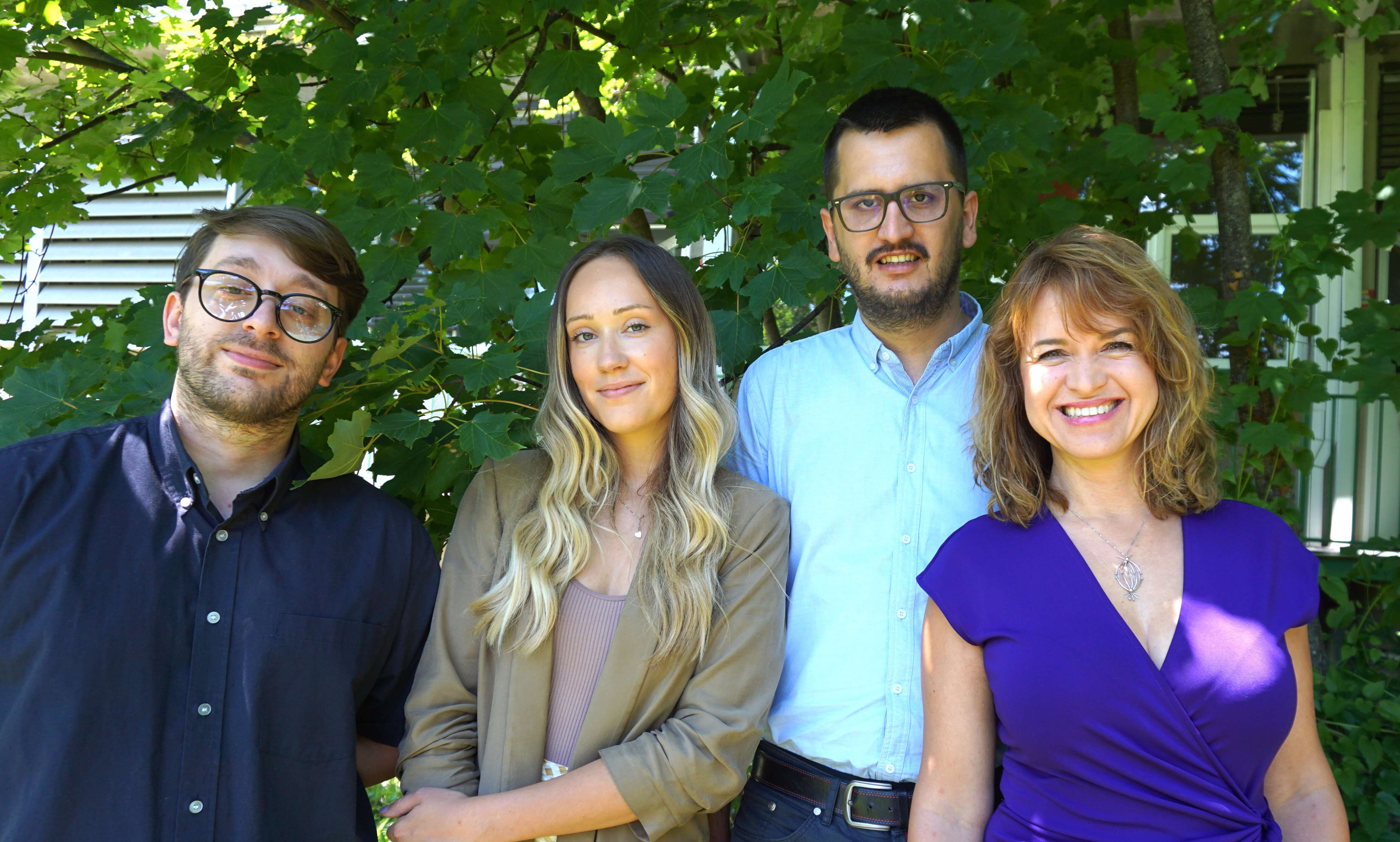
Risteski, Ponjavić, Vukušić and Tolić © Ruđer Bošković Institute
''We hope that the results of this paper will encourage more new research on the role of expanding the spindle in the final stages of cell division. The results we presented are the start of explaining the control mechanisms of this protein, the work of which is under the strict control of many other factors within the cell itself. In addition, the principle of common work we described in this paper could help scientists in determining molecular mechanisms in other processes that are important in cells,'' elaborated the research leader, professor Iva Tolić.
Learn more about Croatian inventions & discoveries: from Tesla to Rimac on our TC page.
For more about science in Croatia, follow TCN's dedicated page.
Ruđer Bošković Institute Chemist Team Makes Progress in Life Formation Research
June 10, 2021 - Do you ever wonder how life was formed? Always dedicated to scientific progress, the Ruđer Bošković Institute chemist team made progress in life formation research supporting the theory that the first molecules needed to develop life were formed on the surfaces of minerals in pre-historic times.
Science explores our present reality, but also the past. With many knowledge or credible theories on evolution, the very basic questions such as „how life came to form“, remain unclear. But why?
„Given that condensation (the process of water vapor turning back into liquid) of free amino acids is thermodynamically unfavoruable process in the water medium, it is a great mystery how it came to the formation of peptides before life on earth“, states the Ruđer Bošković Institute (IRB) press release.
It's worth noting that the thermodynamically unfavourabale process means the process is irreversible, which means it can't be reconstructed, and that's why scientists can see the formation of peptides, chains that connect amino acids that are crucial for life.
So, meet prebiotic chemistry – a study of chemistry dedicated to address and discover how organic compounds formed and self-organized for the origin of life, but so far without consensus.
But, progress is made once again thanks to the always active IRB. IRB's chemist team (José G. Hernández, dr Krunoslav Užarević, and Ph.D. student Tomislav Stolar,), in collaboration with colleagues from the pharmaceutical company Xellia (dr. sc. Ernest Meštrović, mag. chem. Saša Grubešić and dr. Nikolaom Cindro from the chemical department at the Faculty of Science (PMF), University of Zagreb), showed that with mechanochemical activation in a solid-state, the amino acids (organic compounds that combine to form proteins, with both being considered „the building blocks of life“) - such as glycine or alanine form peptides on mineral surfaces.
This supports the theory that life molecules could've been formed on Earth's mineral surfaces. The paper titled „Mechanochemical Prebiotic Peptide Bond Formation“, published in the prestigious Angewandte Chemie scientific journal published on behalf of the German Chemical Society presents these findings in greater detail.
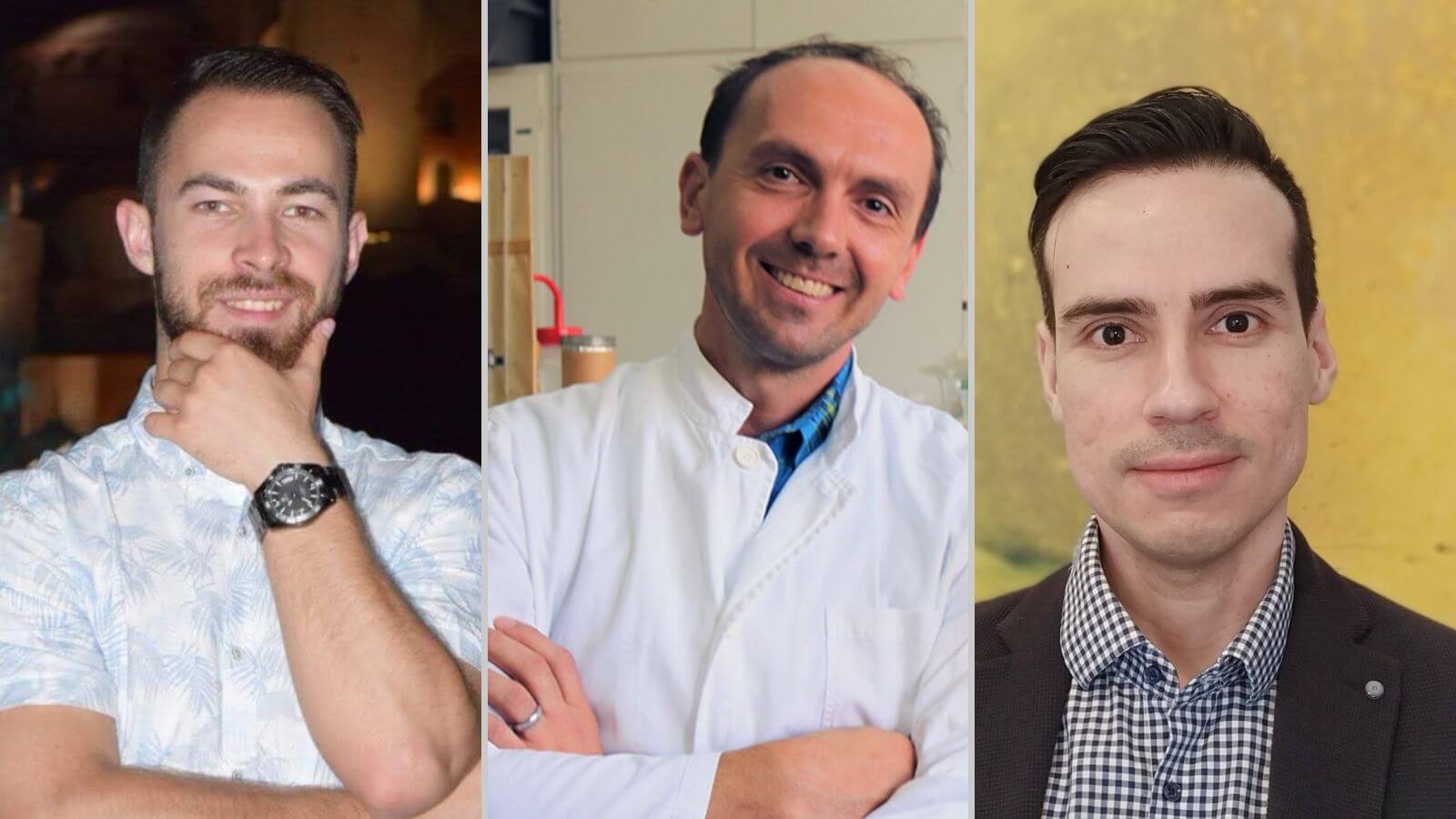
Stolar, Užarević and Hernandez © Ruđer Bošković Institute
„In this research, we showed that mechanochemical activation of free glycin ground with ball mill allows the new oligomers (molecules made of few similar or identical repeating units) by adding minerals that are basic components of earth surface and meteorites. With the identification of organic and inorganic molecules present in the Solar system, it's important in laboratory conditions to develop suitable processes that would explain the presence of these molecules. Such fundamental knowledge can then be applied in modern synthetical chemistry“, said a member of the IRB chemist team Tomislav Stolar. Stolar also participated in developing a new material known as CuZn-MOF-74 on which TCN previously wrote about.
The research was financed by the Croatian Science Foundation (HRZZ), and the next step is to apply this knowledge to synthesize new chemicals, which was one of the purposes of the research described by HRZZ.
IRB adds that the fact that various geological processes change the earth's surface, there is no historic evidence that could definitely answer how life on Earth was formed. It is believed that the first simple molecules triggered complex molecules to form in a process called chemical evolution and from that, life further continued to develop. Liquids, solid surfaces, or the phases between the two could've been potential conditions for these reactions, and mechanical energy sources were most likely found in meteor strikes, erosion, earthquakes, and more while thermal energy was most likely supplied by geothermal sources.
Learn more about Croatian inventions & discoveries: from Tesla to Rimac on our TC page.
For more about science in Croatia, follow TCN's dedicated page.
Cultural Identity of Vukovar: New Book Presented in Vukovar
June 9, 2021 - The fascinating question of the Cultural Identity of Vukovar is researched in a new book edited by Dr. Mateo Žanić and Petar Elez. However, as the editors stressed in the introduction, further research is needed to encompass all social groups in Vukovar and their contribution to the heritage of Vukovar.
After being published back in April this year, the book „Cultural Identity of Vukovar – Contribution to Investigating Heritage and Successors“, was presented this Wednesday in Vukovar. As Ivo Pilar Social Research Institute writes on its website the book was published in cooperation with the Vukovar State Archive, so it was only suitable that the first book presentation was held in Vukovar at the videoconference hall of College Of Applied Sciences „Lavoslav Ružička“ (named after a famous Croatian chemist whose work is awarded a Nobel Prize). In addition, the event marked International Archive Day.
The book was edited by Dr. Mateo Žanić and Petar Elez, and the presentation, alongside editors, saw scientific experts Dr. Dražen Živić, Mirela Hutinec, and Dr. Domagoj Tomas talks about the book.
„Fast events triggered by globalization process and information revolution which paradoxically lead to today's societies being fiercely occupied with the meaning of past, and preserving its valuable traces. In that context, there is a spreading interest for heritage that holds an important component to understand the relationship between the past and present“, says the editorial introduction of the book.
The editors went on to explain how „the city proved to be futile to interpret the meaning of heritage and its contribution to cultural identity,“ and the editors wanted to present various aspects of Vukovar's cultural heritage.
Apart from editors Žanić (who wrote a chapter „Layers of memories and material heritage in modern-day Vukovar) and Elez (author of the chapter „State archive in Vukovar and development of archive service in Vukovar-Srijem County“), the book features eight more authors. Ivan Rogić (Whose Heritage? Who is the successor?), Dražen Živić (on Vukovar's feudalists), Vlasta Novinc („Danube, food, Corso“), Dragana Drašković (on the cultural life of Borovo Selo), and more by Dragan Damjanović, Toni Roca, Ivana Bendra and Ivan Hubalek.
With these broad presentations of culture and heritage in Vukovar, editors hope this book will encourage further research as they are aware this is certainly not the final word on these interesting questions and issues.
„As editors, we are aware that the book does not deal with topics that concern different social groups that left their trace in Vukovar end enrich the history of the city. We hope that future editions that will deal with this topic expand the reach of issues and help us to realize better what do we inherit from the past and why is that important“, concludes the introduction of the book.
So far, the book is available only in Croatian, and research that will, as editors say, deal with other social groups in Vukovar is yet to come. Keeping in mind the terrible aftermaths of the war in Vukovar in the 90s and inter-ethnic tensions, further findings on joint cultural contribution to Vukovar may indeed be the enlightenment needed for peaceful cohabitation and development of Vukovar as a perspective city in Croatia.
Speaking of heritage, learn more about UNESCO recognized heritage in Croatia on our TC page.
For more about science in Croatia, follow TCN's dedicated page.
ConTEL 2021: Scientific Conference on All Things Telecom in Zagreb
June 8, 2021 - From June 30 to July 2, the exciting field of information and communication technology will be at ConTEL 2021 conference in Zagreb.
With information and communication technology steadily growing, new challenges, questions and issues are opening up – both for the industry and academic community. Both industry and academia will get the chance to address the latest issues and questions at the 16th edition of the international telecommunication conference ConTEL 2021, which will take place from June 30 to July 2 in Zagreb.
As the Faculty of Electrical Engineering and Computing (FER) at the University of Zagreb reported on its website, the goal of the conference is to encompass current and upcoming network technologies that allow omnipresent internet and communications as key starters of the connected information society.
„With new services and access networks grows the need to enhance network infrastructure - not just in terms of quality and performances, but also in terms of scalability (upgrading), mobility, energetic sufficiency, and technology integration. The Conference program will introduce the newest achievements in selected fields, through regular and specific thematic meetings and workshops“, states FER.
To ensure the quality of the conference, researchers, and scientists in this respective field, researchers and scientists were invited to submit their papers of work by March 21. The paper went under two double anonymous reviews to ensure an unbiased assessment of its importance and contribution to the conference. The selected papers will be readable on the IEEE Xplore website, and the IEEE (Institute of Electrical and Electronics Engineers) is one of the key sponsors of the conference.
„IEEE and its members inspire a global community to innovate for a better tomorrow through its more than 396,000 members in over 160 countries and its highly cited publications, conferences, technology standards, and professional and educational activities. IEEE is the trusted 'voice' for engineering, computing, and technology information around the globe“, says IEEE, „the world’s largest technical professional organization dedicated to advancing technology for the benefit of humanity“ on its website.
„The format of the event will take into account the COVID-19 situation and travel restrictions. Our wish and goal is to have a live or hybrid event, with virtual participation as necessary. Stay safe and healthy, and we hope to see you in Zagreb!“, states the ConTel official website.
Learn more about Croatian inventions & discoveries: from Tesla to Rimac on our TC page.
For more about science in Croatia, follow TCN's dedicated page.


